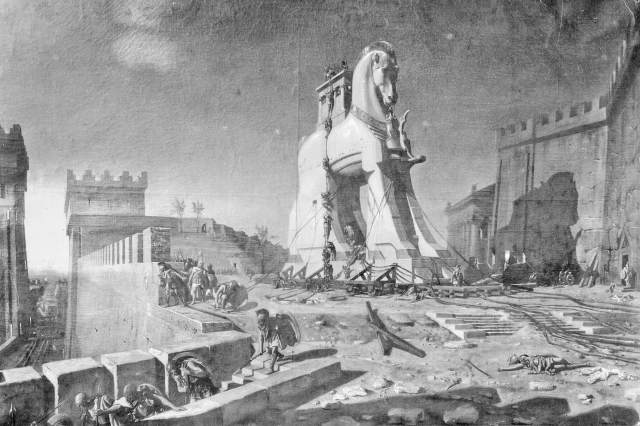Was the Trojan Horse Real?
The myths and history handed down from the ancient Greeks still permeate our culture today, from idioms such as “the Midas touch” and “Achilles’ heel” to the name of the world’s largest online retailer. Many of the legends recount the actions of Odysseus, the king of Ithaca and the hero of Homer’s epic poems the “Iliad” and the “Odyssey.” It’s believed these stories originated as oral performances and were committed to parchment in the eighth or mid-seventh century BCE. But there’s much that remains mysterious about Homer’s epics (including the very existence of Homer himself). One of the most iconic stories of the “Iliad” is that of the Trojan Horse, a tale so well known that the term is still used today to describe clever trickery that breaches defenses. Yet the question remains: Did the incident ever really happen?

We Now Know the City of Troy Was Real
Homer’s “Iliad” richly details the story of a decade-long siege against the city of Troy and its king, Priam, led by Menelaus, king of Sparta, and Menelaus’ brother Agamemnon, king of Mycenae. In the story, the conflict is fought over Menelaus’ wife, Helen (famously described by poet Christopher Marlowe as having a “face that launch’d a thousand ships”), who was given to Priam’s son Paris by the goddess Aphrodite.
Ancient scholars, including Herodotus, the fifth-century BCE Greek historian often called the “father of history,” firmly believed that the Trojan War had occurred some 800 years before classical Greece. But over the years, the common belief became that both the war and the city of Troy itself were the stuff of fiction. That skepticism was finally put to rest in the 19th century, after German amateur archaeologist Heinrich Schliemann discovered a late Bronze Age mound now known as Hisarlik, in the northwest corner of modern-day Turkey. Excavations uncovered fortifications, pottery, and treasures from the site, which is now generally accepted to be the location of ancient Troy, putting the mythical city back on the map.
The existence of Troy raises the question: What else in Homer’s myth is real? Did the Trojan War actually happen? While proof of that great siege is more difficult to come by, there is evidence to suggest the Trojan War, which is said to have taken place around the 12th century BCE, was also a real conflict. Cuneiform tablets from the Hittite civilization reference a war with details that follow the rough outline of Homer’s battling empires. What’s more, charred arrowheads and unburied skeletons found in later archaeological excavations suggest that a large and violent conflict took place within the city’s walls, though there’s no knowing for certain if it was the 10-year Trojan War described in Homer’s epic.






















